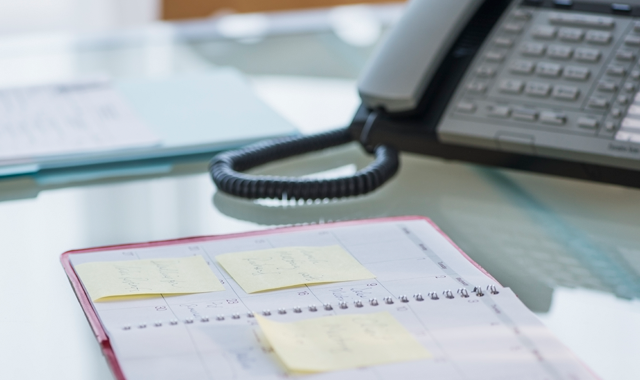6 ways to reduce cancellations and no-shows in 2016
When patients cancel their appointments at the last minute or just don’t show up at all, it leads to chaos and undue stress in your practice.

When patients cancel their appointments at the last minute or just don’t show up at all, it leads to chaos and undue stress in your practice.
Your scheduling coordinator must scramble to find someone to take the slot, and if he or she doesn’t, not only will you not meet that day’s production goals, you’ll also lose money.
Yes, this is frustrating, but there are steps you can take to reduce broken appointments and grow practice production in 2016. Ready to get started? Here are six tips I’ve put together that are designed to help ensure patients don’t flake out when it’s time for their appointment:
More from Sally McKenzie: How to help your office manager succeed
1. Stop relying solely on pre-appointing. While this is a popular practice, it’s also outdated. Patients have no idea what they’ll be doing at 11 a.m. on a Tuesday six months from now so if they schedule an appointment with your office there’s a good chance something more important will come up or that they’ll simply forget.
Not ready to give up pre-appointing? I suggest implementing a hybrid system. Only pre-appoint reliable patients, and flag any patients who have at least two no-shows as unreliable. Call these patients as appointment times become available rather than putting them on the schedule six months in advance.
What do you do if a flagged patient asks to schedule an appointment? Politely tell the patient you’ll be in contact once there’s an opening. Here’s an example of what to say: “Mrs. Evans, we seem to be having trouble coordinating a time that works for your schedule and ours. I don’t have any appointments available at this time. However, I do have your information and will contact you when there’s an opening.”
Hot read: 5 steps to lower your overhead
Continue reading on Page 2 ...
2. Educate patients about the value of dentistry. If patients understand how important it is to maintain their oral health, they’ll be much more likely to show up for their scheduled appointments. Educate patients about the oral-systemic link and the possible consequences of not going forward with recommended treatment. Look at every patient interaction as an opportunity to educate. Offer patients educational brochures and show them videos. Use an intraoral camera and hand mirrors to show them what’s happening in their mouths.
It’s also important to talk with patients about the value of the services you offer and help them understand exactly what happens during their hygiene appointment. How? After every visit, give patients a summary of the services provided and any free products they received. This will help patients see the importance of the visit, and that means they’ll be less likely to blow off their next appointment.
Also from Sally McKenzie: 4 ways to improve recall
3. Be thorough. When scheduling patients, be sure to go over every appointment detail before they leave. Let me give you an example: “Mr. Jones, your one-hour appointment is scheduled for 10 a.m. on Thursday, March 7. If you can’t keep this appointment, please call our office at least 48 hours in advance to allow another patient the opportunity to see the doctor at that time.”
4. Confirm every appointment. Often times, patients don’t show up for an appointment simply because they forgot they had one. That’s why it’s so important to confirm every appointment. Train your scheduling coordinator to find out if patients prefer to confirm appointments via email, text or phone, and then contact patients by their preferred method two days in advance.
Remember, leaving a voicemail isn’t enough when you call a patient. Your scheduling coordinator actually has to talk to the patient to confirm the appointment.
Another tip? Schedule time after hours to confirm appointments. This helps ensure you reach patients who aren’t able to talk during the day.
Interesting read: Four simple systems to get your office in tip-top shape
Continue reading on Page 3 ...
5. Consider expanding your hours. Your patients are busy people and might find it difficult to fit in a dental appointment during the work day, which is why they cancel at the last minute or don’t show up at all.
Consider staying open late a few days a week or offering early morning appointments. You might even want to open your practice for a few hours on Saturday mornings. This flexibility sets you apart from other practices that are only open during the week and makes it easier for patients to find a time that fits their schedule. That, of course, makes them much more likely to show up.
Also by Sally McKenzie: 4 reasons why you never see emergency patients again
6. Establish a policy. If patients know you have a broken appointment policy, they’ll be less likely to flake out. Establish a policy then communicate that policy to new patients. Remember to politely remind existing patients of the policy every time they make an appointment.
Broken appointments bring nothing but stress and chaos to your practice-not to mention lost revenue. Follow these tips and you’ll find yourself dealing with fewer broken appointments in 2016, leading to increased production and a more robust bottom line.
Sally McKenzie is CEO of McKenzie Management, which offers educational and management products available at www.mckenziemgmt.com. Contact her directly at 877-777-6151 or at sallymck@mckenziemgmt.com.
More from Sally McKenzie: 3 ways staff conflict is costing you patients
How Dentists Can Help Patients Navigate Unforeseen Dental Care
December 12th 2024Practices must equip patients with treatment information and discuss potential financing options before unexpected dental treatments become too big of an obstacle and to help them avoid the risk of more costly and invasive procedures in the future.